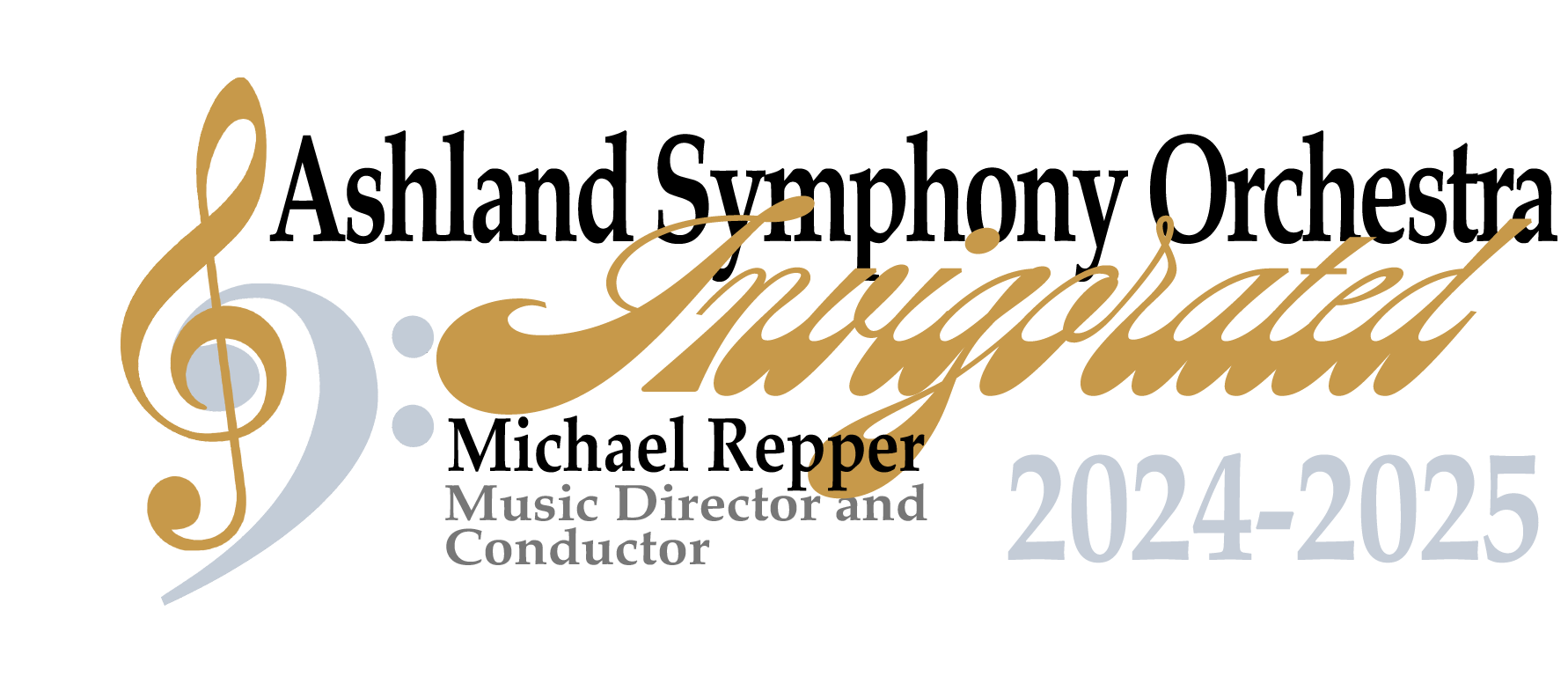Welcome to this concert of the Ashland Symphony Orchestra!
Rejoice!
Brian Nabors – Iubilo
Wolfgang Amadeus Mozart – Exsultate jubilate, K.16
Symone Harcum, Soprano
Wolfgang Amadeus Mozart – Symphony No.41, K.551, C major (Jupiter)
Welcome to this concert of the Ashland Symphony Orchestra!
Brian Nabors – Iubilo
Wolfgang Amadeus Mozart – Exsultate jubilate, K.16
Symone Harcum, Soprano
Wolfgang Amadeus Mozart – Symphony No.41, K.551, C major (Jupiter)
Dear Friends,
It is my honor to welcome you to the 54th season of the Ashland Symphony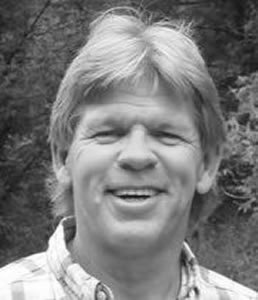 Orchestra. We look forward to seeing and hearing what our Grammy Award winning Music Director and Conductor, Michael Repper, in his second year, has in store for us. Michael’s enthusiasm, talent, and ability to “think outside the box” in dynamic, innovative, and delightful ways were evident in his inaugural year. He and our outstanding musicians presented an array of both familiar and new musical offerings and we look forward to more of that this year. As always, we strive to unite, educate and enrich our community through the engaging and transformative power of orchestral music experiences. We hope you find it inspiring and refreshing. Happy listening!
Orchestra. We look forward to seeing and hearing what our Grammy Award winning Music Director and Conductor, Michael Repper, in his second year, has in store for us. Michael’s enthusiasm, talent, and ability to “think outside the box” in dynamic, innovative, and delightful ways were evident in his inaugural year. He and our outstanding musicians presented an array of both familiar and new musical offerings and we look forward to more of that this year. As always, we strive to unite, educate and enrich our community through the engaging and transformative power of orchestral music experiences. We hope you find it inspiring and refreshing. Happy listening!
Allan Andersen, President
ASO Board of Directors
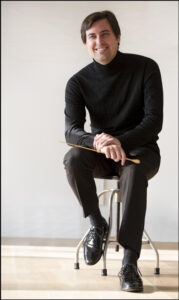 Dear Ashland Symphony Orchestra Patrons,
Dear Ashland Symphony Orchestra Patrons,
It is my great privilege to welcome you to our concerts at the marvelous Robert M. & Janet L. Archer Auditorium. I am incredibly proud to be taking the helm as Ashland’s new Music Director, and to continue to grow this jewel of Ashland County. We are going to make tremendous music together and enjoy a wonderful communal spirit. Our concerts are a place for everyone – come and enjoy, and be sure to introduce yourself! Our musicians and I are incredibly proud to share our work with you, and we hope you enjoy every minute!
Michael Repper
Music Director and Conductor
Ashland Symphony Orchestra
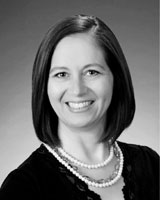 I am excited to be celebrating my 10th season with the ASO! This “Fabulously (un)familiar” season will bring you works by the old masters: Beethoven, Brahms, Mozart, and Tchaikovsky. But you will also hear the world premiere of Stefan Swanson’s Symphony No.2 “Lipsky”, Iubilo by Brian Nabors, Starburst by Jessie Montgomery, and the artistry of the young cellist Aurelia Faidley-Solars, just to name a few of the unfamiliar musical experiences you will have.
I am excited to be celebrating my 10th season with the ASO! This “Fabulously (un)familiar” season will bring you works by the old masters: Beethoven, Brahms, Mozart, and Tchaikovsky. But you will also hear the world premiere of Stefan Swanson’s Symphony No.2 “Lipsky”, Iubilo by Brian Nabors, Starburst by Jessie Montgomery, and the artistry of the young cellist Aurelia Faidley-Solars, just to name a few of the unfamiliar musical experiences you will have.
Free tickets for children and students and the ASO Fan Club, for students in 9th-12th grade and college students, and the new ASO Fan Club Jr, for students in 4th-8th grade, bring young listeners to our concerts.
Be sure to invite your friends, family, and colleagues to come listen to what people are talking about!
Martha Buckner
Executive Director
Ashland Symphony Orchestra
 Michael Repper is one of the most sought-after young conductors in the world. With work spanning four continents, Mr. Repper has an international reputation for engaging and exciting audiences of all spectrums, and for promoting new and diverse musical talents. In 2023, he became the youngest American conductor to win a Grammy® Award in Best Orchestral Performance.
Michael Repper is one of the most sought-after young conductors in the world. With work spanning four continents, Mr. Repper has an international reputation for engaging and exciting audiences of all spectrums, and for promoting new and diverse musical talents. In 2023, he became the youngest American conductor to win a Grammy® Award in Best Orchestral Performance.
Mr. Repper is the Music Director of the Ashland Symphony Orchestra, Mid-Atlantic Symphony Orchestra, New York Youth Symphony, Northern Neck Orchestra of Virginia, and the Principal Conductor of Sinfonía por el Perú, the elite youth orchestras and choruses representing one of South America’s most versatile social impact music programs. Recognizing his success at these ensembles, and his growing profile as a guest conductor all over the world, Mr. Repper was awarded a Solti Foundation US Career Assistance Award in 2020, 2021, and 2022.
His album with the New York Youth Symphony, which features debut recordings of works by Florence Price, Jessie Montgomery, and Valerie Coleman, achieved widespread critical acclaim, reached #1 on the Billboard Chart, a won a GRAMMY® Award, the first youth orchestra to achieve this milestone.
Mr. Repper has collaborated on large-scale productions of symphonic and theatrical works with the Weill Music Institute at Carnegie Hall, the Chicago Symphony Orchestra, Ravinia Festival, Peabody Institute of Music, and the New School of Music, among others. An avid pianist, he regularly performs as a soloist alongside his orchestras and choruses, and as an orchestral player as well. Most recently, he played in the Chicago Symphony for their performances of Bernstein’s Mass, which was broadcast on PBS Great Performances.
Alongside the standard repertoire, Mr. Repper is especially invested in programming new music and showcasing fresh talent. His ensembles have performed dozens of world premieres and pursued innovative commissions, as well as a variety of Carnegie Hall premieres from established and emerging composers. Mr. Repper was the Baltimore Symphony Orchestra Conducting Fellow for two seasons, and he served as the BSO’s New Music Consultant. A trusted ear, Mr. Repper is asked to assist and cover at orchestras nationwide, including the St. Louis Symphony, and for Naxos recordings with the Peabody Symphony Orchestra. His experience with choruses has been recognized with significant positions, including his tenure as the Music Director at the Baltimore Basilica, the first Catholic Cathedral in the United States. Internationally, Mr. Repper has performed with some of the most highly regarded ensembles and in the world’s greatest venues, including the São Paulo Symphony, and at the Palau de la Musica in Barcelona.
His discography includes the aforementioned album of music with the New York Youth Symphony, alongside an album with the Grammy-Nominated Metropolis Ensemble and Grammy-Winning Brooklyn Youth Chorus (“Musical America”), and several with the Peabody Institute as an Assistant Conductor. With the New York Youth Symphony during the Coronavirus pandemic, he was one of the first to pioneer the practice of distanced orchestral performance videos, and he made two performance appearances on CNN, the final one with Platinum-Artist Billy Ray Cyrus.
Mr. Repper complements his work with professional orchestras with a firm commitment to education, and travels worldwide to work with ensembles of young musicians. As Artistic Director of the Chamber Music Society of Maryland, he ushered in a slate of innovative educational programming, such as the Reinecke Youth Chamber Music Scholarship and Fellowship Program. He conducts several masterclasses each year for orchestras from all over the United States on behalf of the New York Philharmonic, and conducts side-by-side and educational concerts with major orchestras, including the Baltimore Symphony and the Colorado Symphony.
Mr. Repper’s most influential conducting mentors are Marin Alsop and the late Gustav Meier. He believes that a conductor’s main role is to connect people and to use performance as a vehicle for positive change. He aims to promote a diverse and inclusive future for the arts, and to pay forward the passion for community that his mentors demonstrated to him.
NABORS, Brian (b.1991, Birmingham, AL): Iubilo
Instrumentation: 2 Flutes, 2 Oboes, 2 Clarinets, 2 Bassoons, 2 Horns, 2 Trumpets, Trombone, Timpani, Percussion, Harp, Piano, Strings
Duration: 2 minutes
Commissioned in honor of ROCO Chamber Orchestra’s 15th season FIFteen Project, Iubilo is a 2-minute fanfare exploring pure, musical manifestations of joy and celebration. Explored throughout the work are flourishing gestures and flamboyant textures to capture the free, energetic attributes exuded through joy. Each respective instrument has its part to play in creating this tapestry of exuberance.
Program Notes: Exsultate jubilate, K.165
MOZART, Wolfgang Amadeus (b.1756, Salzburg; d.1791, Vienna): Exsultate jubilate, K.165
III. Tu virginum corona
Instrumentation: 2 Oboes, 2 Horns, Organ, Strings
Duration: 17 minutes
Mozart was the master of all contemporary musical genres, but opera was his forte, and of course, none since has exceeded his remarkable achievement in the marriage of music and drama. It is easy to forget, today, that Italian opera ruled the roost in eighteenth-century European musical life, and so it was natural for young Wolfgang to begin remarkably early composing them. His father, Leopold, was a consummate stage door father and was assiduous in promoting his young son’s genius. The blandishments—and recognition–of Italian musical culture lay just over the Alps from Salzburg, and the early significant trips to Milan and Rome figured prominently in the lives of father and son. The first trip began in 1769 when Wolfgang was thirteen years of age, was an immense success, and included the première of his first opera seria. That, in turn, led to a commission for a second opera, and it was thus in Milan for that production (during the third trip there, in 1772) that the young Mozart also composed Exsultate jubilate.
The star of the 1772 opera, Lucio Silla, was the accomplished castrato, Venanzio Rauzzini, whose vocal prowess was notable, and it was for him that the showpiece, Exsultate jubilate, was written shortly after Christmas, 1772. It is a brief cantata, consisting of three sections with an intervening recitative. Intended to be sung at High Mass on a celebratory feast day, the Latin text celebrates and comments upon the Nativity. Given this, the work has always been referred to as a motet. It is a quintessential bravura affair, and ample evidence of the capabilities of the male sopranos, the castrati, who took the high parts in contemporary opera seria. Today, of course, female sopranos sing this repertoire, there being, understandably, no male volunteers. Notwithstanding its liturgical nature, Exsultate jubilate, like all such contemporary compositions, is in the imposing secular operatic style. It is Mozart’s first great work that still enjoys frequent performance, and a clear harbinger of the beloved operatic arias still to come in his maturity.
–Wm. E. Runyan
©2021 William E. Runyan
Program Notes: Symphony No.41, K.551, C major (Jupiter)
MOZART, Wolfgang Amadeus (b.1756, Salzburg; d.1791, Vienna): Symphony No.41, K.551, C major (Jupiter)
III. Allegretto
Instrumentation: Flute, 2 Oboes, 2 Bassoons, 2 Horns, 2 Trumpets, Timpani, Strings
Duration: 31 minutes
Mozart’s symphonies are generally conceded to surrender pride of place to his incomparable operas and piano concertos. Nevertheless, they still constitute one of the treasures of symphonic music. Admittedly, he began composition of symphonies when both he and the genre were practically in their respective infancies. He had not yet the models of achievement of the maturity of Joseph Haydn before him, but as Haydn gradually developed the modern symphony, Mozart grew along with the older colleague. They later became close friends in Vienna, and constituted a society of mutual admiration. As with all his works, Mozart’s symphonies were generally written “upon demand,” for a specific purpose or event. But the “wunder” summer of 1788 produced a group of three symphonies that distinguish themselves from all his others. Mozart was in the full bloom of his late genius–he had only three more years left. He was writing the masterpieces that best represent his unique talent. Don Giovanni, after a triumphal première in Prague the previous fall had opened in Vienna in May. On the other hand, his financial position was obviously deteriorating. That summer he moved to a more distant suburb of Vienna where rents were cheaper, and the embarrassing letters to his friends asking for support began. Yet, for unknown reasons he took the time out to write symphonies 39, 40 and 41. A group of symphonic works without equal, and that seemed to be motivated only by interior and personal reasons. They were written in the short space of about two months, amazingly at the same time of the composition of seven other significant works of his maturity.
No.41 in C major, called the “Jupiter,” is the culmination of Mozart’s symphonic composition. The great commentator, Tovey, called the nickname one of the silliest injuries ever inflicted on great works of art, but it serves its purpose, for it alludes to an Oympian mastery of technique that characterizes Mozart’s late works. However, unlike many of those very late works, it bears no darkness, or presentiments of life’s precariousness. Rather, in the context of a sunny, but clearly detached mood–hence the title–Mozart reaches the summit of his symphonic works. It is cast in the usual four movements of the classical period: four movements, with the interior two consisting of a slow movement and a dance-like movement.
While the music of Mozart is famously infused with some of the world’s memorable melodies, what is of great interest in this last, great symphony is the degree to which the composer chooses concise, indeed, incisive motives with which to generate the composition. One might usefully think of the first movement of Beethoven’s famous fifth in this context. And it is just that aspect of Mozart’s melodic style, here, that is the locus of the most well-known and revered movements of this symphony. The last movement is literally a tour de force of that most “austere” of musical textures: counterpoint. The careful listener will discern not just one or two important melodies in the finale, but five! One by one they appear, short and easily identifiable–and then in a most unassuming and musical way Mozart combines them all simultaneously. Theorists call this amazing feat “quintuple invertible counterpoint.” It usually takes a J.S. Bach to pull this off, and then in an earlier and more severe style, Mozart almost throws it off casually–and like all works of great genius, you don’t even have to realize it’s there to enjoy the whole show immensely. It is a Jovian farewell from this most musical of human beings.
–Wm. E. Runyan
© 2015 William E. Runyan
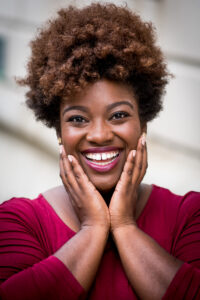
Soprano Symone Harcum comes off the 2022-2023 season with a successful string of role and house debuts including the Glimmerglass Festival in the role of Micaëla in Bizet’s Carmen, Almirena in Handel’s Rinaldo and Donna Anna in Mozart’s Don Giovanni at Minnesota Opera, and at the Lyric Opera of Chicago, she sang the role of Sandra in the world premiere of Will Liverman’s Factotum. Last season, Symone appeared with Minnesota Opera as Léontine in The Anonymous Lover and Micaëla in Carmen, Virginia Opera as La Contessa in Le Nozze di Figaro. This season will see a role debut as Mimí in Puccini’s La Boheme at Minnesota Opera as well as recital and concert engagements across the country.
Other notable roles and achievements include first place in the 2021 Opera Ithaca Competition, a 2020 finalist in in both the Tri-Cities Opera Competition and the New York International Opera + Premiere Opera Vocal Competition and first place in both the National Society of Arts and Letters-DC Dorothy Lincoln-Smith Voice Competition and the Sylvia Green Voice Competition in 2018; Singing the role of Mascha and covering Lisa in Pique Dame (Des Moines Metro Opera), Clorinda in La Cenerentola, High Priestess and covering the title role in Aïda (Virginia Opera), Bea in Three Decembers (Opera Maine), Krystyna Zywulska in Out of Darkness: Two Remain, and Gertude in Hansel und Gretel (Peabody Opera).
After receiving her Bachelor’s Degree in Music Education from Norfolk State University in 2012, she worked as a choral director in Norfolk Public Schools until 2016. Symone received her Master’s of Music from Peabody Conservatory at Johns Hopkins University and continues to study in the studio of Denyce Graves and Margaret Baroody.
Samuel Rotberg, Concertmaster
James E. Thomas Endowed Chair
Corrie Anne Riberdy
Jane Reed
Stephen Domka
Mary Ann Basinger
Cassandra Bryant
Mary Kettering, Principal
Ania Kolodey
Belita Stout
Michael Sieberg
Eva Mondragon, Principal
Joshua Bowman
Lee Wilkinson
Jeffrey Singler, Principal
Rosa Balderrama
Lily Schrantz
JeeYoun Yoo
Dr. Andrew Mehraban, Principal
Aidan Terry
Lisa Jelle, Principal
Carol Oberholtzer
John H. Landrum Endowed Chair
Andria Hoy, Principal
Axl Pons
Thomas Reed, Principal
Joe Minocchi
Ian Hoy, Principal
Zachary Elmore
Laura Makara, Principal
Michael Metcalf, Assistant Principal
Timothy Stewart
Rilay Conley, Principal
Whitney Davis
Michael Grady, Principal
Kirk Georgia, Principal
Torrell Moss, Principal
Lawrence and Catherine Hiner Endowed Chair
Nancy Paterson, Principal
Deborah Logan, Principal
Our ushers and volunteers
Philip McNaull, Technical Director
Aidan Campbell, Assistant Technical Director
Seth Morrison, Stage Manager
Bryce Bishop, Assistant Stage Manager
Jen Burford, House Manager
Mark Gorsuch, Volunteers Coordinator
Ashland City Schools for its continued support of the arts
Roger Price, Professional Voice Actor & Announcer, www.RogerzVoice.com
Please silence all electronic devices.
No flash photography or audio/visual recording permitted.
No food or drink permitted in the Robert M. & Janet L. Archer Auditorium.
Thank you for your cooperation.
The individuals and associations listed on this page, by their support of the orchestra’s operating fund, make possible the continuance of the Ashland Symphony Orchestra. Additional support is needed and will be most welcome at any time throughout the year. If there is an error, please notify the office. Donations listed as of 10/24/23.
Celebrate A Birthday! Welcome A New Neighbor! Honor A Memory! Celebrate A Promotion!
The Ashland Symphony will recognize the people or events in your life with a letter that you have donated in their honor to the Ashland Symphony Orchestra. Please send us that person’s name, address and the event along with your donation and we will send a personalized note acknowledging your thoughtfulness along with the printed celebration text in the upcoming program. Call 419-289-5115 for more information.
‡Sponsor – sponsorships are still available for this season. Call 419-289-5115.
*Additional gift given to the Change for Music Education Campaign
Pacesetters – patrons who pledged on or before July 31, 2023 are indicated in bold.
Name in italics – increased pledge by at least 10%
NAME IN ALL CAPS – increased pledge to move up to a new giving level
Robert M. and Janet L. Archer‡
Ann K. Guthrie‡
Hugo H. and Mabel B. Young Foundation
Ohio Arts Council
Samaritan Hospital Foundation‡
Dr. JoAnn Ford Watson‡*
SUSAN LIME
Trinity Lutheran Church – Rybolt Fund‡
CHARLES AND PEGGY ULRICH
Stan and Diana Brechbuhler
FORREST CONRAD
BARBARA GLENN
Grandpa’s Cheesebarn & Sweeties Chocolates‡
Johnathan Solars Fine Violins‡
Alan and Marjorie Poorman
SPRANG-SMITH AGENCY‡
Anonymous
MARTHA BUCKNER
Dr. and Mrs. Carlos Campo*
JAMES AND KRISTI CUTRIGHT
GERMAIN HONDA OF COLLEGE HILLS‡
Catherine Hiner
Bud and Cuda Ingmand‡
David Kowalka
John and Diane Paulson‡
PATRICIA A. PEREZ
Premier Bank Foundation‡
JOHN AND DANA SHERBURNE*
Ben and Brenda Uselton‡
WAPPNER FUNERAL HOME AND CREMATORY‡
Charles and Melody Barnes
Ron and Lisa Blackley
MICHAEL AND SEIKO HUPFER
TOM AND MARY MCNAULL*
Packaging Corporation of America‡
Peace Evangelical Lutheran Church‡
Tom and Jane Reed
BOB AND JAYNE ROBLIN
Bill and Chris Strine
Dr. Stephen and Peggy Yoder*
Allan and Mary-Rose Andersen
Dr. Sara Battison
Bella’s 220‡
Doug and Susan Blake
Brethren Care Village‡
BETSY CHAPMAN
Charles River‡
Comfort Control‡
Tim and Anne Cowen‡
Coldwell Banker Ward Real Estate
BOB AND JAN CYDERS
Ray and Cherie Dever
Thomas and Kristie Donelson
EXPLORE ASHLAND‡
Justina Fabich
Dr. Lucille Ford
Gibson Family Dental LLC‡
Robert and Vickie Groenke*
Louise M. Hamel
Loretha A. Kline
Lighthouse Wealth Management‡
John and Donna Rae Maiken
Dann and Connie Marble*
Ron and Carolyn Marenchin‡
Mel McKeachie and Melody Snure
James H. Prinz
Rev. Jim and Mrs. Joan Scott
Deborah Seaman*
D.R. and C.L. Sedwick*
Carolyn and Jim Smith
Rev. Tom and Kitty Snyder
Dorothy Stratton*
Michael and Deborah Sullivan
ROBERT AND TRINA SWAN
Ralph and Betty Jo Tomassi
Russell and Jan Weaver
Whitcomb & Hess CPAs & Financial Advisors‡
Marla and Steve Willeke
Tim and Linda Workman
Abbott Laboratories ECG
LUCY AMSBAUGH
Myron and Carolyn Amstutz
Ashland Noon Lions
Sandra Bally
TED AND PATRICIA BYERLY
Brooke DaHinden
Gretchen M. Emery
ROGER AND NANCY FOX
Dr. and Mrs. Robert E. Gregg*
Ed and Karen Grose
GENE AND JAN HABERMAN
JAN HAMILTON
Henry and Norma Hiner
Barbara Hoshiko
Irwin & Associates CPA’s
Robert D. and Shirley Matz
Ken and Sheila Milligan
Brian Minner in honor of Sheila Minner
Larry and Diane Moretz
Pam and Mike Mowery*
Kevin and Carol Oberholtzer*
Dick and Carol Obrecht
Lana M. Potter
Tom and Diane Rohr
Glen and Judy Stewart
Stefan Swanson
DR. GENE ANE MRS. SALLY TELEGO
Trinity Lutheran Church Choir Camp‡
Hal and Betsy Weller
SUSAN WHITTED
SALLY AHLERS
Baker Bowman & Co.
Shirley Bookmyer
Bill Buckingham
Dennis and Polly Davis
Larry Ames and Teresa Durbin-Ames
JOHN AND BETTILU FRAAS
DAVID AND DEBBY GRAY*
Tom and Chris Herron
Gary and Cheryl Hildebrand
Rebecca Humrichouser*
Stan and Joyce Hunt
Bob and Colleen Jackson
Tom and Marilyn Koop
RON AND BARB LEDDY
Maurer Photography
Tom and Bonnie McGee
Tim and Beverly McMillen
Jack and Diane Messner
Rebecca A. Owens
DAN AND LISA PETERSON
Jane Roland*
Rita M. Roper
Paul and Barbara Schantz
Bill and Patti Schumaker
Jack and Nancy Smith
JIM AND CHERYL SOUTH
Mike and Nancy Udolph
Leroy and Donna Weaver
Daniel and Rita Wierbiki
Anonymous
Erin Beebe
Jeff and Diane Bonfiglio
Madeline Cole
Mrs. Pat Hildebrand
Shirley Maurer
VIRGINIA MCKINLEY
Gaylord and Carol Meininger
Alice Metcalf
Karen Reaume
Natalie and Doug Scott
Sarah Shepherd
S. Kris Simpson
Christopher and Linda Swanson
Dale and Jody Thomae
Noel and Juanita Watson
Paula Watson
Russ and Kathy Whisler
Ron and JP Whitehill

In 1997, Bob and Jan Archer established the first donor fund through the Ashland County Community Foundation to benefit the Ashland Symphony Orchestra. The ASO then partnered with the ACCF in 1999 and created the “Ashland Symphony Orchestra Fund in Memorium of James E. Thomas”. Since then, three new agency funds and fourteen additional donor advised or designated funds have been established! The Ashland County Community Foundation can assist you in creating a fund to benefit the Ashland Symphony Orchestra now or as part of your estate plan. For more information, call the Foundation at 419-281-4733.
Donations may be made to existing endowments at any time. Contact the Foundation for more information www.ashlandforgood.org.
*To contribute to these funds, please send donation to Ashland Symphony Orchestra, 401 College Ave., Ashland, OH 44805.
Robert M. & Janet L. Archer Fund est. 1997
Ashland Symphony Orchestra Fund in Memorium of James E. Thomas est. 1999*
ASO Podium Endowment Fund in Honor of Maestro Arie Lipsky est. 2018*
ASO Harold Weller Music Education Endowment Fund est. 2019*
gift from Nick & Edna Weller Charities: Harold & Betsy Weller and Thomas Weller
ASO Rev. John H. Landrum Memorial Endowed Chair for Flute 2 est. 2020*
gift from Marybelle H. Landrum
Ashland Symphony Orchestra est. 2000
Mary M. Case Memorial Fund est. 2005
Ann K. Guthrie Fund est. 2009
Arie Lipsky Honorary Endowment Fund est. 2010
Kopp Family Fund est. 2011
Dr. Alvin W. Garrett Fund est. 2017
William and Marlene Rose Fund est. 2017
J. Robert and Ruth L. Tipton Fund est. 2017
Dr. JoAnn Ford Watson Fund est. 2017
Dr. Beverly Bixler Fund est. 2018
Billy Harris Charitable Fund est. 2018
Lawrence and Catherine Hiner Endowed Chair for Percussion of the ASO Fund est. 2020
John R. Donelson for the benefit of the ASO est. 2021
Elizabeth Pastor Fund for the benefit of the ASO est. 2021
F. Dean and Joan Bartosic Family Fund for the benefit of the ASO est. 2023
This site uses cookies. Find out more about cookies and how you can refuse them.
New membership are not allowed.
